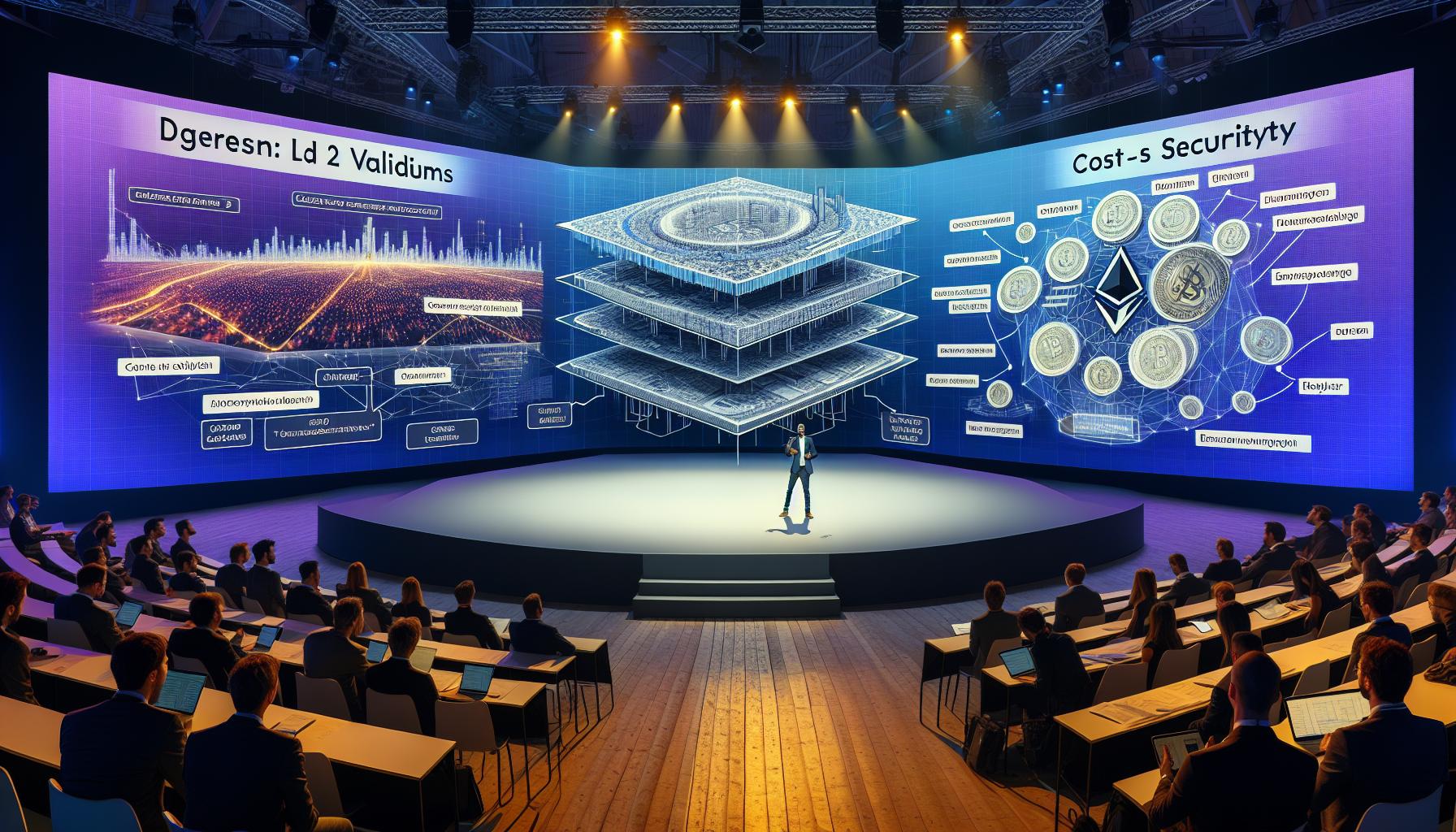The Importance of Understanding L2 Solutions for Scalability on Ethereum
A recent conversation with Vitalik Buterin on X platform sheds light on a few important topics regarding L2 networks – the main scalability tool for the Ethereum network. At its core, an L2 solution is a secondary framework or protocol built atop the Ethereum blockchain, designed to increase transaction capacity and speed without compromising the security provided by the main chain, known as layer 1 (L1). This conversation is vital because it helps users understand the types of solutions available and their respective tradeoffs.
Exploring the Differences Between Rollups and Validiums in L2 Networks
Buterin participated in a discussion clarifying that “L2s” encompass both rollups and validiums. The distinction is important for users to grasp the different security and scalability features. Rollups are “security-favoring” solutions that bundle or “roll up” transactions into a single proof, which is posted to the main chain. This process allows for high security, as the L1 blockchain directly secures them.
In contrast, validiums are “scale-favoring,” designed to boost capacity by storing data off-chain but with proofs still on-chain, offering slightly less security for much greater scalability. The distinction is nuanced but significant. While rollups are more expensive due to the data being posted on-chain, they offer higher security. Validiums, on the other hand, provide a cheaper alternative, with a slight tradeoff in security.
Vitalik Buterin’s Proposed Terminology: Strong L2 vs Light L2
Buterin suggests that the terminology should reflect these differences without delegitimizing either option. In the spectrum of L2 solutions, he proposes terms like “strong L2” for rollups and “light L2” for validiums to help users navigate their choices better. This new terminology would provide a clear distinction between the two types of solutions and allow users to better understand what they offer in terms of security and scalability.
The Cost-Security Tradeoff: Comparing Rollups and Validiums
The cost-security tradeoff is a crucial factor to consider when choosing between rollups and validiums. Rollups, being more security-focused, require on-chain data posting, making them slightly more expensive. However, this tradeoff ensures a higher level of security for the transactions. On the other hand, validiums offer a cheaper alternative since they store data off-chain, but this comes with a slight compromise in security. Users must weigh their priorities and determine which aspect is more important to them – higher security or greater scalability.
The Complexity of Categorizing L2 Solutions: The “Intermediate Space”
Interestingly, Buterin also points out that the architecture of L2 solutions is not strictly about security levels. He previously attempted to categorize these layers but recognized that there is a significant “intermediate space” between rollups and validiums, further complicating the classification. This highlights the diverse nature of L2 solutions and the need for a more nuanced understanding of the tradeoffs associated with each option. Users must take into account various factors beyond just security and scalability when making decisions about implementing L2 solutions on the Ethereum network.
In conclusion, the recent conversation with Vitalik Buterin on L2 solutions for Ethereum sheds light on the importance of understanding the different types of solutions available and their tradeoffs. Rollups and validiums provide different approaches to increasing transaction capacity and speed while maintaining the security of the Ethereum network. Buterin’s proposed terminology of “strong L2” and “light L2” helps to clarify the distinctions between these solutions. However, users must also consider the cost-security tradeoff and the complex nature of categorizing L2 solutions when making decisions about implementing them. By gaining a better understanding of L2 networks, users can make informed choices about the scalability options available on the Ethereum blockchain.
Analyst comment
Neutral News.
As an analyst, the market for L2 solutions on Ethereum is expected to see increased interest and adoption as users gain a better understanding of the available options. Rollups and validiums offer different tradeoffs in terms of security and scalability, but Buterin’s proposed terminology of “strong L2” and “light L2” can help users navigate their choices. However, users must consider the cost-security tradeoff and the complexity of categorizing L2 solutions when making implementation decisions. Overall, the conversation with Buterin provides valuable insights for users and can drive further development and adoption of L2 networks on Ethereum.













